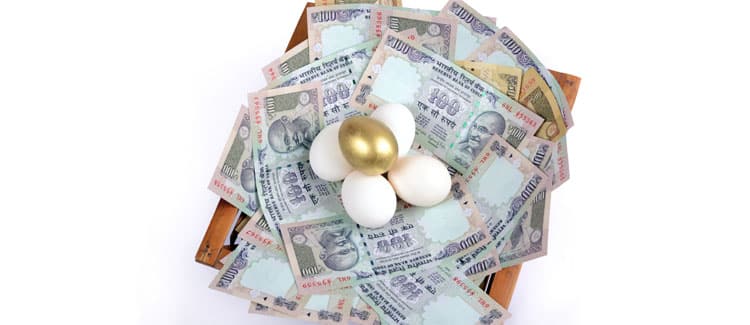ITR2 Form
The department of the Income Tax characterizes the taxpayers as per their source of income, income, and various other factors. Those taxpayers who get income from different categories should download and fill different forms for Income Tax Return. For example, the ITR - 2 form is for those Hindu Undivided Families (HUFs) and individuals who do not have any business or profession.
Eligibility for Filing ITR - 2 Form for Assessment Year 2019 - 20
ITR - 2 forms should be filled by those HUFs and individuals who receive income other than the income that one gets from ‘Profits and Gains from Profession or Business’. Therefore, people who get income from the below sources can file ITR through ITR - 2 form:
- Get income from Pension or Salary.
- Get income from capital gains/ property/ loss on the sale of investments (including both long and short term).
- Get income through house property (this can be from more than one or multiple house properties).
- Get income from other sources like bets on racehorses, winnings from the lottery, or other legal ways of gambling.
- Get income from agriculture which is more than Rs.5, 000.
- Get income from foreign or from some foreign asset.
- Not an ordinary resident and non-resident.
Any Director of some unlisted or listed company is needed to file the returns in ITR - 2.
Define ITR 2 Structure
ITR 2 form is divided into these parts:
- Part A: All the general information
- Part B - TI: Total Income’s computation
- Part B - TTI: Tax liability’s on total income computation
Details should be filled if the Income Tax Return is prepared by the Tax Return Preparer
- Schedule S: Details of the income from the salaries
- Schedule CG: Income’s computation under Capital gains
- Schedule HP: Income’s detail from House Property
- Schedule OS: Income’s computation as per income from other sources
- Schedule BFLA: Income's statement after set-off of an unabsorbed loss that has been brought forward from the earlier years.
- Schedule CYLA: Income’s statement after setting off of the loss of the current year.
- Schedule CFL: Statement of the losses that are to be forwarded to the future years.
- Schedule 80G: Statement of the donations that are entitled to the deductions under Section 80G.
- Schedule VIA: Deductions’ statement (from the total income) as per Chapter VIA.
- Schedule 80GGA: Donations’ statement for rural development or scientific research.
- Schedule AMTC: Tax credit’s computation under section 115JD.
- Schedule AMT: Alternate Minimum Tax’s computation that is payable as per section 115JC.
- Schedule SPI: Income’s statement that is arising to minor child/ spouse/ wife of a son or anyone else or the association of people that are to be included in the income of the assessee in Schedules - CG, HP, and OS.
- Schedule EI: Exempt income detail
- Schedule SI: Income’s statement that is chargeable to tax at special prices.
- Schedule PTI: Details of pass-through income from trust of business or investment fund according to Section 115UB, 115UA.
- Schedule TR: Details of the taxes that are paid outside India.
- Schedule FSI: Statement of income that is arising or occurring outside India.
- Schedule FA: Foreign Asset details and income generated from any source that is outside India.
- Schedule AL: Liability and Asset at the end of the year (is applicable when the income is more than Rs.50 Lakhs).
- Schedule 5A: Statement of income’s appointment between the spouses that is governed by the Civil Code of Portuguese.
Who Are Not Eligible to File ITR 2 for Assessment Year 2019 - 20?
- All the individuals who are eligible to fill out the form number ITR - 1.
- Any Hindu Undivided Family and individual getting income from profession or business.
How to File ITR 2?
One can submit the ITR 2 form either offline or online:
Offline:
The below people can file the Income Tax Return offline:
- Individuals who are 80 years old or more.
These people can file the ITR offline by performing the following:
- By providing a return that is barcoded.
- By providing a return in the form of physical paper.
The department of the income tax issues an acknowledgment during the submission of the return in physical form.
Electronically/ Offline:
- By electronically furnishing the Income Tax Return with a digital signature.
- By electronic transmission of data and after that submitting the return’s verification in the Return Form with the name ITR - V.
If one electronically submits the ITR - 2 form with the digital signature, then the acknowledgment is sent to the registered email id of the assessee. One can select to download this form electronically from the website of the income tax department. After that, it is required to sign this form and send it to the CPC office of the Income Tax Department within 120 days of the e-filing.
Note: ITR - 2 is one of the annexure - less form, i.e. one does not have to attach any documents when sending it.
Main Changes Introduced in ITR 2 for Assessment Year 2019 - 20
- It is already mentioned that ITR - 1 is not applicable for non-residents and RNORs. These people have to opt for ITR - 2 to file their income tax return.
- The applicability of ITR - 2 is made clearer as much as possible now it is applicable for HUF and individuals who have income other than the income under the head naming ‘Profits and Gains from Business or Profession’.
- The field for which the residential status is characterized into ‘Residential status in India (for HUFs)’ and ‘Residential status in India (for the individuals)’.
In the situation of ‘Residential status in India (for the individuals)', the three subcategories are ‘Resident but not the ordinary resident', ‘Resident', and ‘Non-Resident' is being mentioned needing one to tick some specific category to which these belong. The taxpayers have to provide the number of days of his/her residency in India.
In the situation of non-residents, an individual is also needed to mention the residential jurisdiction during the last year providing the relevant jurisdiction’s Taxpayer Identification Number/s. Moreover, in case one is an Indian citizen or is of Indian origin, the duration of his/her stay in India during the last year (specifically in days) and his/her stay's duration in India during the four preceding years (specifically in days).
- In the situation when the ITR is filed by an assessee, all the additional information regarding the capacity of the assessee has to be provided.
- An individual taxpayer should provide information related to the investment in unlisted shares of equity and the movements in this type of investment throughout one year.
- An individual taxpayer should provide information related to the Directorship held in a company during last year that also mentions whether the shares are unlisted or listed.
- One has to provide the following details according to income from the salaries:
- Value of the perquisites under section 17 (2).
- Salary according to section 17 (1).
- Profit in the lieu of income under section 17 (3).
In cases the salary is received from multiple employers, the gross salary with above-mentioned breakup should be provided for every such employment. The below-mentioned parts have to be deducted from the total gross salary:
- All the deductions that are under section 16.
- Allowance exempt as per section 10 – all the details should be specified.
- Under income that is generated from house property, providing the PAN details of the tenant is necessary, if the tax is deducted according to section 194 – IB. It is also mandatory to provide tenant's TAN when the taxes are deducted according to section 194 – I.
- In the case of long-term and short-term capital gains received from the sale of building or land or both, the buyer’s details, which are, name, % share of the ownership, PAN, and address should be provided. The PAN details should be given in case of TDS that is deducted as per section 194 – IA or when the PAN is provided by the buyers in the documents.
- All the information related to income's receipt from various other sources every quarter related to dividend salary and income through the lotteries, races, crossword puzzles, games, etc for calculating the interest under Section 234C.
- Interest income like pass-through income should be disclosed under ‘Income from other sources’.
- The introduction of the section 80TTB deduction related to senior citizen.
- Under set off and carried forward loss: the categorization of income long term and short term capital gains taxed at specific rates in India according to DTAA and the net salary from other sources that are chargeable at all the applicable rates.
- Donation’s bifurcation that qualifies for the deductions u/s 80G into cash or other modes.
- Donation details for development and scientific research u/s 80GGA with the details of address, name, cash, PAN, and other means of donation and eligible amount.
- Schedule AMT – Alternate minimum tax's calculation that is payable u/s 115JC and Schedules AMTC – Tax credit computation u/s 115JD is introduced.
- When disclosing the income of some specified person as per schedule SPI, the ‘Nature of Income’ with subhead is replaced with ‘Head of income’.
- As per schedule SI, the below income is charged at a specific price are added:
- Long term and short term capital gains
- Other income sources which are chargeable at some specific rate.
- Other income sources which are chargeable at some special rates in India according to DTAA.
- Pass through salaries like the short term and long term capital gains.
- Through salary in the income’s nature from other sources.
- According to schedule EI, the following disclosures are needed in case of agricultural income that is more than Rs.5Lakhs:
- District name with a pin code in which agricultural land is situated.
- Agricultural land measurement in Acre.
- Whether the land of agriculture is held or owned on the lease (the drop-down should be provided).
- Whether the land of agriculture is rain-fed or irrigated (drop-down should be provided).
- The above disclosure should be provided separately for every agricultural land.
- According to Schedule EI, the information about the income that is not chargeable to tax according to DTAA providing the details like nature of income and amount, name of the country and code, Head of Income, DTAA Article, and whether the TRC is obtained.
- All the details of income that is pass-through and not taxed.
- Under the schedule FA, as per the details of the foreign assets, and income from various sources that are from outside India, then below details are needed:
- Details that are held of the Foreign Depository Accounts (including any of the beneficial interest) at any time during the relevant accounting period.
- Details of Debt Interest and Foreign Equity held (that includes any beneficial interest) at the time that is relevant to the accounting period.
- Details of the Foreign Custodial Accounts that are held (that includes any beneficial interest) at a time that is relevant to the accounting period.
- Details of Annuity Contract or Insurance of Foreign Cash Value that is held (that includes any beneficial interest) at a time that is relevant to the accounting period.
- In Schedule TDS, the additional information that gives details related to the income head and the Gross income, in the situation of income for which the credit of TDS is claimed.
- In Schedule Part B – TTI introduction of tax’s computation that is payable u/s 115JC for comparison.
˜The insurers/plans mentioned are arranged in order of highest to lowest first year premium (sum of individual single premium and individual non-single premium) offered by Policybazaar’s insurer partners offering life insurance investment plans on our platform, as per ‘first year premium of life insurers as at 31.03.2025 report’ published by IRDAI. Policybazaar does not endorse, rate or recommend any particular insurer or insurance product offered by any insurer. For complete list of insurers in India refer to the IRDAI website www.irdai.gov.in
*All savings are provided by the insurer as per the IRDAI approved insurance plan.
^The tax benefits under Section 80C allow a deduction of up to ₹1.5 lakhs from the taxable income per year and 10(10D) tax benefits are for investments made up to ₹2.5 Lakhs/ year for policies bought after 1 Feb 2021. Tax benefits and savings are subject to changes in tax laws.
¶Long-term capital gains (LTCG) tax (12.5%) is exempted on annual premiums up to 2.5 lacs.
++Source - Google Review Rating available on:- http://bit.ly/3J20bXZ


- SIP Calculator
- Income Tax Calculator
- Compound Interest Calculator
- NPS Calculator
- Show More Calculator
Income Tax articles
Explore the popular searches and stay informed
- LIC
- Investment Plan
- Annuity Plan
- Child Plan
- Pension Plan
- ULIP Plan
- Child Investment Plan
- SIP
- LIC Calculator
- SIP Calculator
- SBI SIP
- ULIP Calculator
- Sukanya Samriddhi Yojana
- Best SIP Plans
- Retirement Planning
- SBI SIP Calculator
- HDFC SIP Calculator
- Sukanya Samriddhi Yojana Interest Rate
- NPS Interest Rate
- Deferred Annuity Plans
- SBI Annuity Deposit Scheme Calculator
- Immediate Annuity Plans
- Post Office Child Plan
- Prime Minister Schemes For Boy Child
- Government Schemes for Girl Child
- 50k Pension Per Month
- Atal Pension Yojana Calculator
- Best Pension Plan in India
- CIBIL Score
- 1 Crore Term Insurance
- Best Term Insurance Plan
- Term Insurance for Women
- Term Insurance for NRI
- Term Insurance
- Term Insurance Calculator
- Life Insurance
- Term Insurance with Return of Premium
- Whole Life Insurance
- Term Insurance vs Life Insurance
- What is Term Insurance
- Life Insurance Calculator
- 5 Crore Term Insurance
- 2 Crore Term Insurance
- 50 Lakh Term Insurance
- Term Insurance for Housewife
- Benefits of Term Insurance
- Term Insurance Terminology
- Medical Tests for Term Insurance
- Term Insurance for Self Employed
- Claim Settlement Ratio
- 10 Crore Term Insurance
- Term Insurance for Smokers
- 1.5 Crore Term Insurance
- Zero Cost Term Insurance
- FIRE Calculator

















